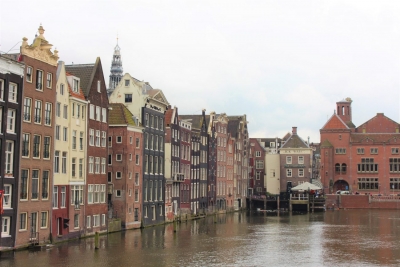
Amsterdam is the capital of the Netherlands. With more than one million inhabitants in its urban area (and almost two and a half million inhabitants in its metropolitan area), it is the country’s largest city and its financial, cultural, and creative centre.
Amsterdam derives its name from the city’s origin as “Dam” of river “Amstel”. In the past, the name was “Amstelredamme” which later changed as “Amsterdam”. Amsterdam is one of the most popular destinations in Europe, attracting over 7 million international travellers annually.
Amsterdam is colloquially known as Venice of the North because of its lovely canals that criss-cross the city, its impressive architecture and more than 1,500 bridges. There is something for every traveller’s taste here; whether you prefer culture and history, serious partying, or just the relaxing charm of an old European city.
Settled as a small fishing village in the late 12th century, Amsterdam became one of the most important trading centres in the world during the Dutch Golden Age of the 17th century, with the first stock exchange and the joint ventures that gave birth to modern day Capitalism. The city’s small medieval centre rapidly expanded as the Jordaan and the Canal Belt neighbourhoods were constructed; the latter’s cultural significance was acknowledged when it became a UNESCO World Heritage Site in 2010. In the 19th and 20th centuries, the city expanded in all directions, with many new neighbourhoods and suburbs designed in modernist styles.
Amsterdam is not the seat of the government, which is in The Hague. It has always been a city that attracted many people from outside its borders. Nowadays it’s the city with the most different nationalities in the world (178 in 2010). The city has an informal atmosphere unlike other capital cities its size. In fact, Amsterdam has a history of non-conformism, tolerance and progressivism, all of which come together in its liberal policies concerning cannabis and teleiophilic prostitution. Other attractions include the Rijksmuseum, the Van Gogh Museum, the Anne Frank House, the Flower Market, Albert Cuyp Market, and the Vondelpark.
Picture Credit : Google




